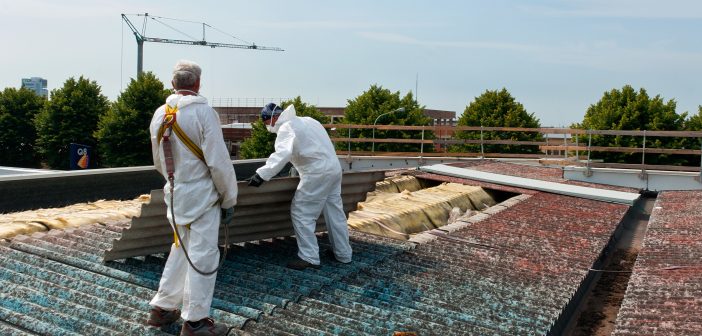Everything you need to know about this process
Asbestos is a naturally silicate mineral. It has insulation properties and chemical inertness. For this reason, this substance was widely used in many industries before. However, it was later found out that this also brings negative impact towards our health. There was a significant increase of asbestos related conditions. Hence, the government all over the world took action to completely remove asbestos from all industrial products.
In this article, the experts from an Asbestos removal company have shared some useful guide about asbestos removal.
Why Did The Government Ban The Use of Asbestos?
Asbestos usage was banned in Australia on 31 December 2003 due serious health risks. Thousands of Australians died due to a rare cancer called Mesothelioma. Research shows that the main caused for this was Asbestos exposure. For this reason, the Australian government had implemented the total banned of using Asbestos across the country. They have been regulating the import and export of goods to ensure that products are Asbestos free. In addition to, several organizations have been helping those that suffer from Asbestos related conditions.
Asbestos Removal License
Asbestos removal is a crucial process. Therefore, you need to hire someone that is an expert on this field. On that regard, the contractors you should only be dealing with are the ones who have valid license. They must also hold a certification like CPCCDE3014A to prove that they have undergone an extensive training. The following are the two categories of asbestos removal licenses.
- Class A license holders – Permitted to remove friable Asbestos.
- Class B license holders – Can only remove non-friable Asbestos.
When is Asbestos Removal Necessary?
Before Demolition:
It is stated under the law that before dismantling a building any asbestos containing materials should be safely removed. If you are unable to comply then a report should be submitted. You must also inform if an emergency situation like a sudden collapse occurs.
When Doing Renovations:
Asbestos fibers may leak if disturbed by activities like renovations. Therefore, any materials that have this toxic substance must be removed during property restoration. You must also need to inform your neighbors for them to be aware.
Residential Asbestos Removal Types
Roofs
Asbestos felt was used as an underlayment for shingles in roofing. Also, it was the primary material in built-up roofs. A licensed practitioner should test the roofing for Asbestos before they consider handling or removing the roof. In removing Asbestos from the roof, one should:
- Use a plastic sheet to cover the floor.
- Use a flat pry bar for removal
- Disposed it properly after removal
Ceilings
Asbestos was used as an additive in ceiling tiles and paper backing for the tiles. Adhesives such as mastic used to fix the ceiling contained Asbestos. Moreover, the licensed practitioner should remove Asbestos immediately after samples are tested. To remove Asbestos from the ceiling:
- Clear the working area. Cover any remaining furniture.
- Turn off the home’s heating, ventilation, and air conditioning unit to avoid spreading contamination.
- Seal the doors and windows with plastic flaps while keeping pets and all people without protective gear away from the area.
Walls
Old walls may have materials that contains asbestos. It is used for fireproofing and insulation against cold and noise in many buildings and homes. Here’s the process:
- Use a pump spray to wet the walls
- Cover the rest of the area with plastic sheets
- Safely detach the insulation
- Pack it tightly in a disposal bag
Floors
Asbestos has insulation properties. A mastic layer (an adhesive) used below the tile is likely to contain Asbestos. Here’s how you remove the contaminated vinyl sheets:
- Wet the area that has suspected asbestos
- Seal off the work site to avoid asbestos fibres leakage
- Use a scraper to pry up and carefully strip off the vinyl sheet.
- Properly disposed it after removal
Cladding
Thin asbestos cement flat sheets are used for exterior wall cladding. In some cases, Asbestos over-cladding does not need be removed. If you have to remove it , here’s what you have to do:
- Spray first a PVA solution to the asbestos sheet
- Remove bolts, screws and fixings
- Placed them in tight container
Fencing
One should consider removing Asbestos from a fence once you notice a damage to it. To remove Asbestos from a wall, you should remove the fence sheets carefully.
- Wear complete protective gear
- Seal off the working area
- Wet the fence
- Safely remove the sheet
- Pack and disposed it properly
Soil
Asbestos can go deep down to soil when it runs off from poorly made composite products like roof tiles. When the materials decompose, the fibers escape and can be swept away with water passing over damaged areas. In addition to, uncontrolled dumping or mismanaged deconstruction may release Asbestos into the soil. Remove the contaminated soil carefully. After that, take it to an authorized disposal location.
Site Clearance Certificates
Asbestos clearance certificates ensure that all visible asbestos fragments posing a significant health risk have been removed. It also includes the transit routes to and from the removal area to the region of disposal.
Air Monitoring
Asbestos air monitoring is the measure of the number of asbestos fibers in the air that are breathable. Air monitoring is of various types, such as Control Air Monitoring and Clearance Air Monitoring.
Asbestos Testing
Highly qualified assessors and inspectors test your property for Asbestos through Fiber identification and Air monitoring techniques. During inspection, they will collect sample and bring it to NATA. It is an accredited lab testing for asbestos.
Asbestos Disposal
The Australian government has licensed landfills for disposing of Asbestos. One should contact the dumps to check if they will accept the Asbestos. Some of the designated landfills include the Domestic asbestos landfills that accept small household amounts. The approved government locations include Alexandra, Benalla, Drysdale, Fingal.
Asbestos removal costs
The whole procedure may cost $1500 – $3000. Several factors can also affect the cost of this procedure. Moreover, asbestos insulation pipe of 3 meters can be removed at $400-$600 while complete removal of (floors, attic, pipes, walls, ceilings, and roof) of a building 150 square meters will cost $20,000 – $30,000.
You can surely save money when you do-it-yourself. However, since this process is quite risky it’s wise to seek professional help.




